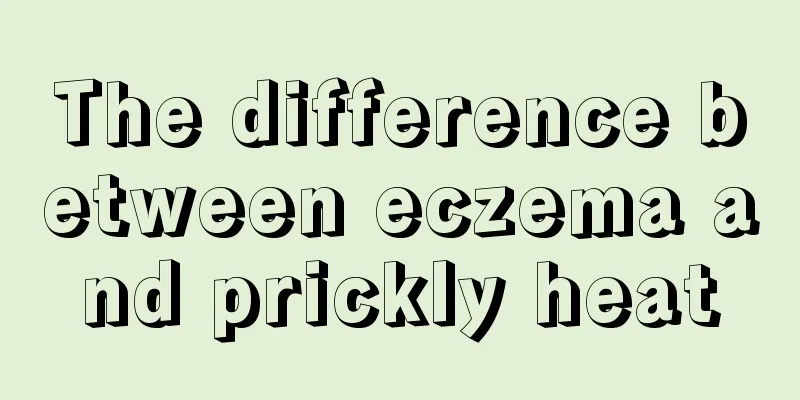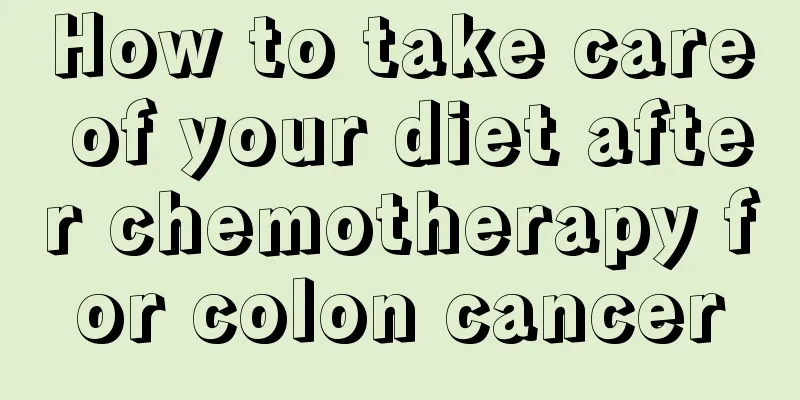The difference between eczema and prickly heat

|
Eczema and prickly heat are both common skin diseases in life. The incidence of these two skin diseases is relatively high, and there are certain similarities in their symptoms, so many people easily confuse eczema and prickly heat. In fact, in many aspects, there are still many differences between eczema and prickly heat. If you want to distinguish them, you should also pay attention to the symptoms and other aspects to distinguish them. 1. Prickly heat and eczema are easily confused in life. Both cause itchy, dark red papules, but there are differences between the two. Prickly heat is often related to poor sweating, and its main manifestations include red, sesame-sized papules, blisters or pustules in the sweating area or trunk. Patients often have symptoms such as hyperhidrosis, and it is more common in summer. Eczema is associated with dry skin and manifests itself as skin symptoms such as erythema, papules, etc., as well as flaky papules. The lesions are polymorphic and symmetrical, and eczema has no obvious seasonality.2. Prickly heat is caused by blocked sweat pores, while there are many causes of eczema, which are often unstable. Common causes of eczema include: eating certain meats such as fish, shrimp, eggs, beef, mutton, etc.; inhaling certain pollen such as dust mites, wool, etc.; focal infections such as tonsillitis; sunlight, heat, dryness, etc. in the living environment; chemical substances such as cosmetics, soap, etc.; indigestion, gastric dysfunction, and metabolic disorders. It can be seen that prickly heat is a temporary disease, while eczema is a chronic disease. 3. Prickly heat occurs in summer and is more common in children. Eczema is not seasonal and can occur all year round, regardless of gender, age or age. However, it often relapses or worsens in winter, has a tendency to exudate, a chronic course, and is prone to repeated attacks. In addition, prickly heat often appears on the neck, chest, back, elbows, popliteal fossa and other parts of the body. In children, it may occur on the head, forehead and other sweaty parts. Eczema can occur anywhere, but often occurs on the cheeks, forehead, brow arches, behind the ears, etc. |
<<: What is seborrheic dermatitis
>>: Cucumber treats prickly heat
Recommend
What medicine should I use for peeling feet and blisters
Peeling and blisters on the feet are quite common...
What are the symptoms of submucosal nasopharyngeal carcinoma and how to treat it with traditional Chinese medicine
What are the symptoms of submucosal nasopharyngea...
Is sweating on the chest while awake called night sweats?
Night sweats are actually a symptom of an unhealt...
Gua Sha back color judgment
People must be familiar with the practice of scra...
Can ginger cure hair loss?
The problem of hair loss troubles many people. So...
What to do if there is a black mark on the buttocks
Since the buttocks are located on the back of a p...
How to talk about love skills to make the relationship last longer
For those who have no experience in love, especia...
Does early ovulation mean early implantation?
If women are ready to have a baby, they need to t...
What are the symptoms of lung cancer metastasis to brain cancer
The causes of malignant tumors are related to fam...
What are the symptoms of heart failure
We all know that heart failure is a very serious ...
Training methods to improve emotional intelligence
Many people have high IQs but not necessarily hig...
What are the early symptoms of small liver cancer? 5 early symptoms of small liver cancer
Do you know the early symptoms of small liver can...
Why do I have so many acne on my forehead, scalp and chest?
Acne on the body is a very disgusting thing. The ...
What are the differences between high and low anal fistulas?
High-position anal fistula and low-position anal ...
Chinese medicine formula for treating epilepsy
Epilepsy is a disease that patients need to pay a...









